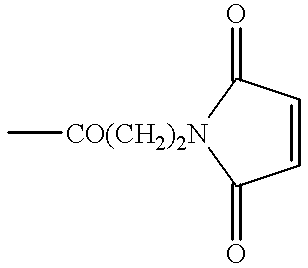Humanized antibodies directed against A33 antigen
a technology of humanized antibodies and antigens, applied in the field of humanized antibodies directed against a33 antigen, can solve the problems of limited use of murine mab a33 as a therapeutic agent in humans, reduced effectiveness, and marginal anti-isotype response to humanized antibodies
- Summary
- Abstract
- Description
- Claims
- Application Information
AI Technical Summary
Problems solved by technology
Method used
Image
Examples
example 1
Assay Development
Assembled antibody in culture supernatants or in purified preparations was measured in an ELISA format assay (Whittle et at., 1987) using solid phase anti-Fcg chain to capture the chimeric antibody and mouse monoclonal antibody to human kappa chain linked to horseradish peroxidase (HRP) to reveal the bound antibody.
To demonstrate antigen binding both direct and competition format binding assays were used. In the direct binding assay ASPC-1 or Colo205 cells were incubated at 40.degree. C. for 1 h. in the presence of various amounts of murine, chimeric or humanised A33, or non-specific antibody controls. After washing the cells to remove unbound antibody, the presence of bound antibody was revealed by further incubation with FITC-labelled anti-murine or anti-human Fc and by detection in the FACScan analyser (Becton Dickinson).
In competition format increasing amounts of the test antibody were co-incubated with saturating amounts of FITC-labelled murine antibody and the...
example 2
Purification of hA33 Fab'(.gamma.4.DELTA.cys) and Cross-Linking to Produce hA33 DI-Fab' (DFM) and Tri-Fab' (TFM)
hA33 Fab'(.gamma.4.DELTA.cys) (see Example 1) was purified from NS0 cell tissue culture supernatant by chromatography on protein A sepharose. A column of protein A sepharose was equilibrated with 100 mM boric acid buffer pH8.0 containing 150 mM sodium chloride. The tissue culture supernatant from NS0 cells expressing the hA33 Fab'(.gamma.4.DELTA.cys) was then adjusted to pH 8.0 by the addition of 1 M Tris and applied to the column. After washing with the equilibration buffer, the Fab' was eluted with 0.1 M citric acid collecting fractions directly into sufficient 1M Tris to adjust the pH of the fraction to between pH6 and pH7.
The purified Fab'(.gamma.4.DELTA.cys) was buffer exchanged into 0.1M sodium acetate / citrate buffer pH6.0 containing 2 mM EDTA and concentrated to approximately 8mg / ml by ultrafiltration. Partial reduction was then carried out by adding b-mercaptoethy...
example 3
a) Constructions of Vectors for E. coli Expression
The construction of vectors for the expression and secretion from E. coli of the humanised A33 as a Fab' (.gamma.4.DELTA.cys) was accomplished in a number of steps. In a first step the hL gene and the hH-Fd (.gamma.4.DELTA.cys) gene were reconstructed to replace the 1g signal sequences with those from the ompA protein (Skerra and Pluckthun, 1989).
The vector pSKompA was digested with Nru1, within the signal sequence coding region, and EcoR1 was used to clone both the hL gene and the hH-Fd'(.gamma.4.DELTA.cys) gene. The human kappa constant region was isolated from pMRRO10 (International Patent Specification No. WO 92 / 01059) as an SpI1-EcoRI fragment and the humanised V.sub.L region was obtained in a PCR reaction using primer 5' AAA.AAG.ACA.GCT.ATC.GCG.ATT.GCA GTG.GCA.CTG.GCT.GGT.TTC.GCT.ACC.GTA.GCG.CAA.GCT.GAT. ATC.CAG.ATG.ACT.CAG 3' and primer 5' CCG.GCC.CGT.ACG.TTT. TAC.TTC 3' (SEQ ID NOS 1 and 2, respectively) to amplify the V.sub....
PUM
| Property | Measurement | Unit |
|---|---|---|
| Fraction | aaaaa | aaaaa |
| Fraction | aaaaa | aaaaa |
| Length | aaaaa | aaaaa |
Abstract
Description
Claims
Application Information
 Login to View More
Login to View More - R&D
- Intellectual Property
- Life Sciences
- Materials
- Tech Scout
- Unparalleled Data Quality
- Higher Quality Content
- 60% Fewer Hallucinations
Browse by: Latest US Patents, China's latest patents, Technical Efficacy Thesaurus, Application Domain, Technology Topic, Popular Technical Reports.
© 2025 PatSnap. All rights reserved.Legal|Privacy policy|Modern Slavery Act Transparency Statement|Sitemap|About US| Contact US: help@patsnap.com



